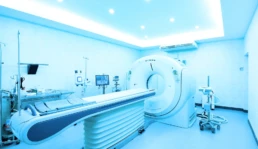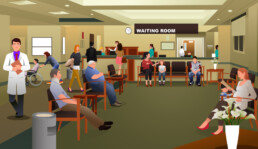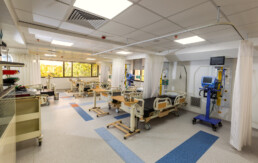We have seen increasing momentum in the push for patient-centred care. Mental wellbeing is one of the critical factors determining our health. Hospitals and clinics don’t just focus on treating disease and illness. Instead, they look for ways to promote psychological health as a holistic recovery and healing method.
As healthcare organizations focus on patient-centered care, healthcare design automatically follows suit. The concept of a healing environment that boosts mental well-being through design aesthetics appeals to many healthcare facilities. We go into the details of patient-centric design in our previous blog, linked here.
“Today, patients expect more than just treatment. They are now at the centre of hospital and health design,” says Ar. Kshititi Nagarkar, Shree Designs.
Even though things have improved, a great deal of stigma is still involved in acknowledging mental illness and seeking treatment. This stigma can be heightened by the environments where people seek treatment. Think about dark and isolated patient wards, which appear very clinical and cold and don’t offer any elements that remind the patient of the comforts of home. Are we offering them a fair chance at holistic rejuvenation?
Designers can help health systems, public and private, create healing spaces that make patients feel less “institutionalized” and more dignified throughout the treatment process.
“A space should support you as you try to achieve specific goals. For therapy offices, that means creating a calm and refreshing environment to balance the rigorous mental and emotional work of therapy,” explains Sally Augustin, Ph.D., an applied environmental and design psychologist and founder of Design with Science.
Imagine an era of “supportive design” where we cultivate the physical and social environments in healthcare settings to reduce stress and improve patient well-being. Let’s look at several elements that can help change the patient experience with the power of innovative and empathetic design.
Here are a few features that make healthcare design both pretty and purposeful.
Nature Heals and Restores
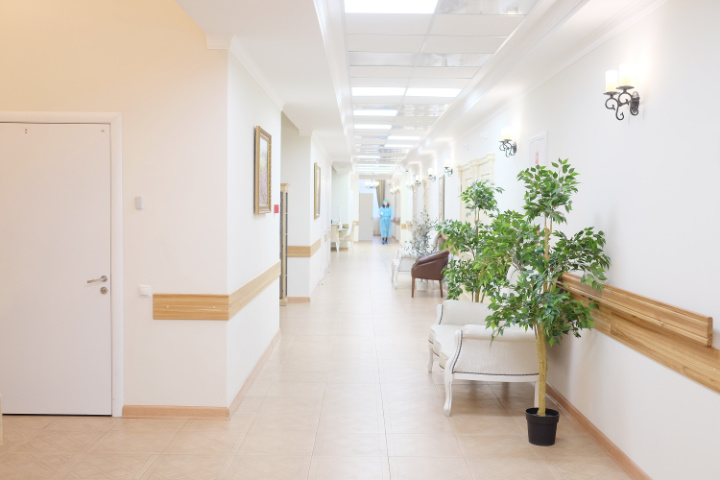
It’s no secret that a little bit of sunlight and fresh air can elevate our moods. Imagine how potent the effect may be on patients and their caregivers struggling with mental health conditions. A pleasant environment that brings the healing elements of nature indoors can promote a sense of well-being that benefits patient recovery.
Researchers have found the benefits of incorporating nature in design.
Exposure to nature elements:
- Improves health results
- Supports pain management
- Reduces stress levels
- Promotes a sense of overall well-being among patients, caregivers, and healthcare providers.
A recent scientific study showed that people exposed to residential greenspace had enhanced pain thresholds and tolerated pain better than those not exposed to the same environment.
A little bit of nature can go a long way. Organizations have experimented with rooms that have vibrant views of wooded or garden areas. Some have space for interior courtyards that offer well-lit spaces for a soothing stroll, while others choose colours, wall designs, and well-placed art to promote this connection to nature.
Positive Distraction
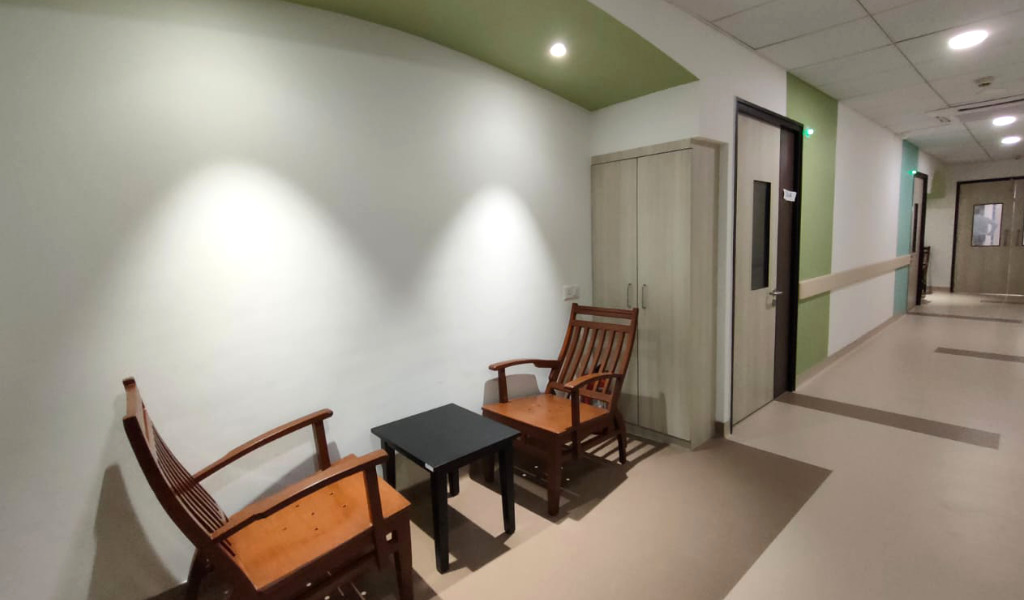
Patients struggling with mental health are often overwhelmed with their circumstances and need positive distractions to get them through the tough days. A combination of relaxation rooms, quiet spaces, and sensory rooms where patients can de-escalate, unwind and find peace are essential elements. Art is a relatively simple way to incorporate distractive features in an area. From hanging paintings to scenic murals, art allows a temporary escape for patients dealing with emotional issues. Well-placed pieces can also provide a more practical function, providing a sense of location and familiarity in larger centres. Other ideas include play spaces for younger children or interactive technology to help the time pass peacefully.
Social Support
Mental health treatment can be an isolating experience for patients and their caregivers. This is why using shared spaces enhances a sense of community support that can be invaluable. Spending time with loved ones can build hope and help heal. Traditionally, mental health facilities do not focus on this aspect and often designate uninviting, stark, and uncomfortable areas as meeting zones.
Today, designers are helping healthcare organizations infuse cosy “living-room-like” spaces that enhance the patient’s sense of social support.
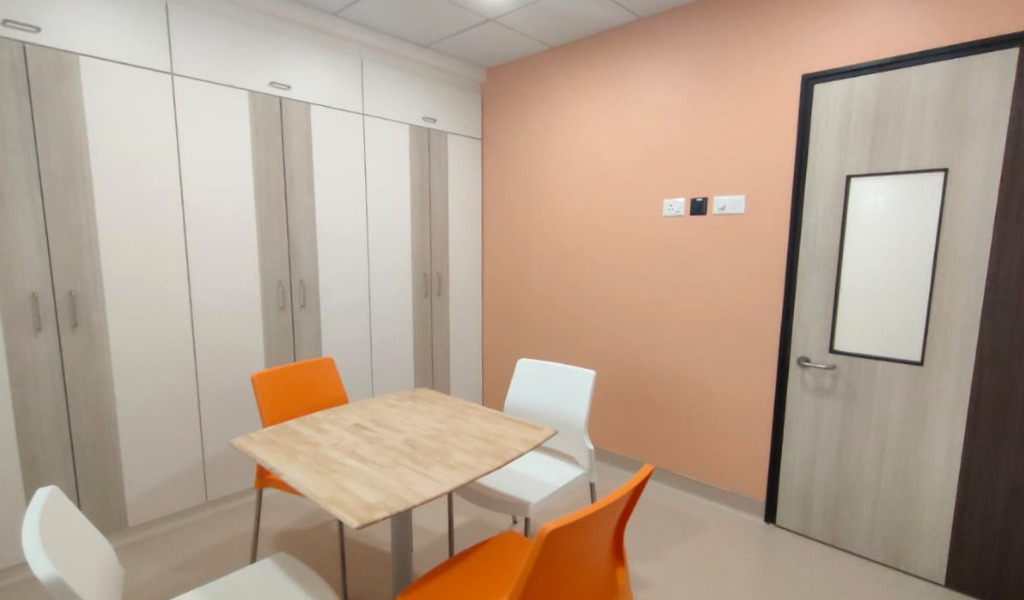
Privacy and Safety
Patients staying in a care facility for extended periods often acutely feel a lack of privacy. Mental health facilities have unique codes and guidelines that set them apart from other healthcare centres. For the safety of their patients, they need to incorporate specific features in rooms, like polycarbonate windows that are less likely to break or doors hung on quick-release hinges to allow staff to enter a room if a patient is barricaded in. Plumbing and room fixtures may also need adjustments to reduce suicide attempts.
While these measures are critical, the environment it creates can often be perceived as almost prison-like, where patients experience a lack of privacy and control over their surroundings. Even simple design solutions can create opportunities for personal space for patients who may feel like they have none. Studies have shown that reducing crowding by providing private rooms and multiple communal spaces may lessen patient and employee stress and aggression.
A big part of mental health therapies involves counselling sessions, so it does make a considerable difference if the proper thought is put into the structure and function of the rooms used for these sessions. Layouts that are non-confrontational and can be flexibly arranged, as well as those that have dimmable lighting to promote a sense of calm or discrete entry points to protect privacy, are well received by patients.
Careful consideration of colours, furniture, lighting, and other elements, makes patients feel at home, with enhanced privacy and dignity.
Noise Reduction
Healthcare centres are always bustling with activity, and noise levels can be disturbing for those struggling with their health. However, noise reduction can be tackled through architectural planning that prevents overcrowding of beds, and segregated sections for healthcare workers, like nursing stations or break rooms.
Choosing the right flooring and insulation with excellent noise-dampening qualities is great for controlling sound transmission. In addition, water features like fountains can mask unnecessary noise and enable a soothing environment perfect for healing.
Conclusion:
At Shree Designs, we believe in the positive influence of compassionate design on the patient experience. We have worked on psychiatric facilities in renowned healthcare organizations like the Masina Hospital, Mumbai, and clinics catering to the youngest and most vulnerable in society, such as paediatric care centres and neonatal ICUs. Through our designs, we have had the pleasure of injecting a little bit of light and hope in traditionally cold and sterile clinical areas.
Designing spaces in healthcare facilities to boost mental well-being is a lesson in balance!
A balance between:
- Functionality and flexibility,
- Efficiency and empathy
- Comfort and clinical care
Take a look at how we supported healthcare providers as they used the power of healing spaces in our various projects, linked here.
Related Posts
Human-Centred Design for Radiology and Imaging Centres
Dive into our latest blog where we unveil the 7 Essential Elements of Human-Centred Design in…
Patient-centric Clinic Designs
Visiting a doctor’s office is hardly ever a fun experience for patients. While waiting for a…
Cost-effective and patient-centric hospital design
Biltrax Media in its Feb 2022 issue, published an interview with our principal architect Kshititi…
Patient-Centred Care and Community Healthcare
Patient-centred care focuses on individual patients’ healthcare needs and desired health related…
